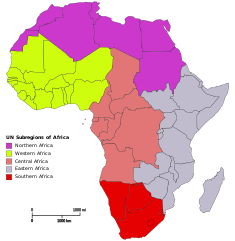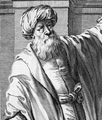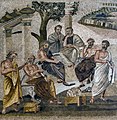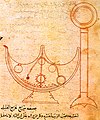Portal:History of science
The History of Science Portal
The history of science covers the development of science from ancient times to the present. It encompasses all three major branches of science: natural, social, and formal. Protoscience, early sciences, and natural philosophies such as alchemy and astrology during the Bronze Age, Iron Age, classical antiquity, and the Middle Ages declined during the early modern period after the establishment of formal disciplines of science in the Age of Enlightenment.
Science's earliest roots can be traced to Ancient Egypt and Mesopotamia around 3000 to 1200 BCE. These civilizations' contributions to mathematics, astronomy, and medicine influenced later Greek natural philosophy of classical antiquity, wherein formal attempts were made to provide explanations of events in the physical world based on natural causes. After the fall of the Western Roman Empire, knowledge of Greek conceptions of the world deteriorated in Latin-speaking Western Europe during the early centuries (400 to 1000 CE) of the Middle Ages, but continued to thrive in the Greek-speaking Byzantine Empire. Aided by translations of Greek texts, the Hellenistic worldview was preserved and absorbed into the Arabic-speaking Muslim world during the Islamic Golden Age. The recovery and assimilation of Greek works and Islamic inquiries into Western Europe from the 10th to 13th century revived the learning of natural philosophy in the West. Traditions of early science were also developed in ancient India and separately in ancient China, the Chinese model having influenced Vietnam, Korea and Japan before Western exploration. Among the Pre-Columbian peoples of Mesoamerica, the Zapotec civilization established their first known traditions of astronomy and mathematics for producing calendars, followed by other civilizations such as the Maya.
Natural philosophy was transformed during the Scientific Revolution in 16th- to 17th-century Europe, as new ideas and discoveries departed from previous Greek conceptions and traditions. The New Science that emerged was more mechanistic in its worldview, more integrated with mathematics, and more reliable and open as its knowledge was based on a newly defined scientific method. More "revolutions" in subsequent centuries soon followed. The chemical revolution of the 18th century, for instance, introduced new quantitative methods and measurements for chemistry. In the 19th century, new perspectives regarding the conservation of energy, age of Earth, and evolution came into focus. And in the 20th century, new discoveries in genetics and physics laid the foundations for new sub disciplines such as molecular biology and particle physics. Moreover, industrial and military concerns as well as the increasing complexity of new research endeavors ushered in the era of "big science," particularly after World War II. (Full article...)
Selected article -

Africa has the world's oldest record of human technological achievement: the oldest surviving stone tools in the world have been found in eastern Africa, and later evidence for tool production by humans' hominin ancestors has been found across West, Central, Eastern and Southern Africa. The history of science and technology in Africa since then has, however, received relatively little attention compared to other regions of the world, despite notable African developments in mathematics, metallurgy, architecture, and other fields. (Full article...)
Selected image

A Philosopher Lecturing on the Orrery (sometimes called simply The Orrery) is a painting (oil on canvas, ca. 1766) by Joseph Wright of Derby depicting a public lecture about a model Solar System, with a lamp—in place of the Sun—illuminating the faces of the audience. Wright captures the spirit of the Enlightenment, with knowledge as a force of moral uplift for the audience of commoners under the tutelage of the natural philosopher. Consistent with the astronomical theme, the partially illuminated faces may represent the phases of the Moon, ranging from full (the children) to gibbous (the man standing on the left) to new (the figure seen from behind).
Did you know
...that the word scientist was coined in 1833 by philosopher and historian of science William Whewell?
...that biogeography has its roots in investigations of the story of Noah's Ark?
...that the idea of the "Scientific Revolution" dates only to 1939, with the work of Alexandre Koyré?
Selected Biography -
Gottfried Wilhelm Leibniz (or Leibnitz; 1 July 1646 [O.S. 21 June] – 14 November 1716) was a German polymath active as a mathematician, philosopher, scientist and diplomat who is credited, alongside Sir Isaac Newton, with the creation of calculus in addition to many other branches of mathematics, such as binary arithmetic and statistics. Leibniz has been called the "last universal genius" due to his vast expertise across fields, which became a rarity after his lifetime with the coming of the Industrial Revolution and the spread of specialized labor. He is a prominent figure in both the history of philosophy and the history of mathematics. He wrote works on philosophy, theology, ethics, politics, law, history, philology, games, music, and other studies. Leibniz also made major contributions to physics and technology, and anticipated notions that surfaced much later in probability theory, biology, medicine, geology, psychology, linguistics and computer science.
Leibniz contributed to the field of library science by developing a cataloguing system while working at the Herzog August Library in Wolfenbüttel, Germany, that served as a model for many of Europe's largest libraries. His contributions to a wide range of subjects were scattered in various learned journals, in tens of thousands of letters and in unpublished manuscripts. He wrote in several languages, primarily in Latin, French and German. (Full article...)
Selected anniversaries
- 1499 - Birth of Thomas Platter, Swiss humanist (d. 1582)
- 1785 - Birth of Claude-Louis Navier, French physicist (d. 1936)
- 1846 - Birth of Ira Remsen, American chemist (d. 1927)
- 1865 - Death of Heinrich Lenz, German physicist (b. 1804)
- 1891 - Death of Sofia Kovalevskaya, Russian mathematician (b. 1850)
- 1923 - Death of Wilhelm Röntgen, German physicist, Nobel Prize Laureate (b. 1845)
- 1944 - Death of Eugène Michel Antoniadi, Greek astronomer, a crater on Mars and the Antoniadi crater on the Moon were named in his honor (b. 1870)
- 1996 - The IBM supercomputer Deep Blue defeats Garry Kasparov for the first time
Related portals
Topics
General images
Subcategories
Things you can do
Help out by participating in the History of Science Wikiproject (which also coordinates the histories of medicine, technology and philosophy of science) or join the discussion.
Associated Wikimedia
The following Wikimedia Foundation sister projects provide more on this subject:
-
Commons
Free media repository -
Wikibooks
Free textbooks and manuals -
Wikidata
Free knowledge base -
Wikinews
Free-content news -
Wikiquote
Collection of quotations -
Wikisource
Free-content library -
Wikiversity
Free learning tools -
Wiktionary
Dictionary and thesaurus









































































